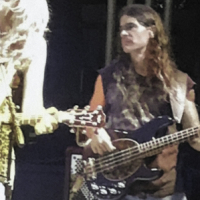Loopy Pro: Create music, your way.
What is Loopy Pro? — Loopy Pro is a powerful, flexible, and intuitive live looper, sampler, clip launcher and DAW for iPhone and iPad. At its core, it allows you to record and layer sounds in real-time to create complex musical arrangements. But it doesn’t stop there—Loopy Pro offers advanced tools to customize your workflow, build dynamic performance setups, and create a seamless connection between instruments, effects, and external gear.
Use it for live looping, sequencing, arranging, mixing, and much more. Whether you're a live performer, a producer, or just experimenting with sound, Loopy Pro helps you take control of your creative process.
Download on the App StoreLoopy Pro is your all-in-one musical toolkit. Try it for free today.




Comments
Very beautiful piece. Less is more ! Thank you for sharing.
May I ask what pianobook libraries you used to create your patch?
Thank you @JanKun . I used samples from Isolation and Mickleburgh.
Wow, I haven't visited pianobook for a while. Some very good new libraries.
Isolation is a huge library, so many mics used ! A breakdown of your process to create your patches would be welcome cause the result is gorgeous. Like how many samples used in total , any layering, any low pass filter applied to lower velocities etc...
@JanKun: the more I'm using audiolayer the more I streamline my process.
Getting the samples in order is what take the most time: correcting DC bias, levels, noise, sample start and end, remove clicks and other shhhhh: lot of those libraries tend to rely to much on the sampler. I still work like it was the 90's on my Akai: work at sample level to optimize it as much as possible and do the rest in the sampler.
All of that really wasn't needed with Isolation: the recording is amazing.
For the piano here, I mixed samples from the two pianos to my liking for each layer/zone/key, (I liked the resonance in Mickleburgh in the low register) and exported the new sample with filtering/EQ and naming that makes importing easy in audiolayer. Each layer is mixed the same, with the same EQ changing shape over the zones.
Did the same for the mechanics noises.
For this piano I also slightly detuned the lows.
Then in audiolayer it's pretty simple: importing, final adjustments like crossfade, setting the key dow/up samples, pedal samples and it's done. The is a pretty neat piece of software really easy to use. Unlike Kontakt that I still don't master after almost a decade using it.
the piano here is made of 5 velocity layers and 88 zones per layer: works great for solo piano pieces.
I made a simplified patch with only 30 zones and 4 layers so it can work in more busy arrangements and it sounds really close. I don't think it is really needed because NS2+audiolayer seem to take almost anything I trow at them.
Sounds like a true labor of love.
Hope you won't mind me asking, but how did you have direct access to the samples ? Something tells me you had to use Kontakt on desktop for that, am I right?
I am sure many people would be happy to play your Audiolayer patch should you feel like sharing it.
Pianobook is an amazing resource. One of my favourites is The Claustrophobic Piano, I always find myself going back to it!
the samples are in the archive in wav format in the samples folder. I don't remember if I used the Kontakt or decent sampler archive here. The samples are the same anyway.
Sharing my patch would require contacting the guys who mades those recording, finding a server to upload the huge file, that exactly the kind of things I'm not good at.
I understand, sorry for asking !
Anyway, it is great to have a nice producer and artist like you onboard !
no worries @Jankun it's just me and y many inabilities.
I went after the 2 pianos and the Isolation Piano downloads (Kontakt and DecentSampler) won’t uncompress.
Mickleberg uncompressed and might be worth importing into AudioLayer.
These types of “do it yourself” tool creation can tale hours and hours when frankly the commercial apps just work.
Still… free is still a useful benefit for many.
@McD you have to rename the decent sampler file: .zip, then you can uncompress. the samples are in the Samples folder.
Yes it is a lot of work, but I like doing it, and I also like having something a little unique.
Lovely and gentle… enjoyed it a lot 😊